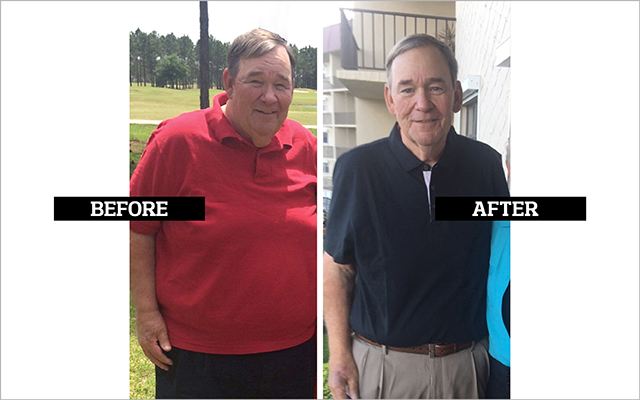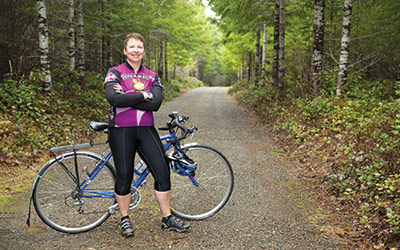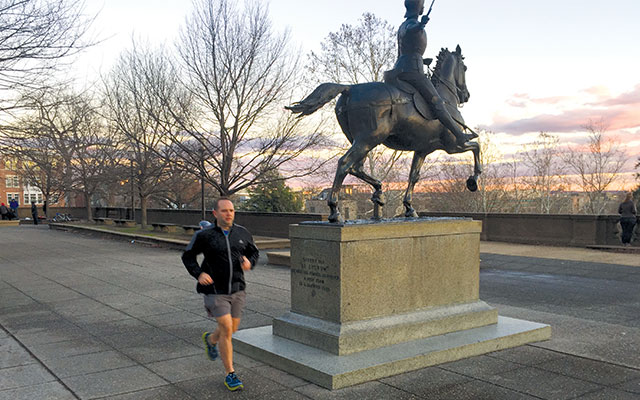For a long time, I lived my life only halfway. I didn’t eat well, and I didn’t exercise enough. Even worse, I didn’t think these things were worth the effort.
Eventually, those habits put me in a life-threatening situation. I was severely overweight, and my heart was barely hanging on. Under the circumstances, I was happy just to be alive — but it wasn’t until I reclaimed my health that I began truly living.
Warning Signs
I was driving to work in April 2006 when I began feeling some discomfort in my right arm. I was 57 — a year older than my father had been when he died from arteriosclerosis — and weighed 377 pounds. The strange feeling convinced me to go back home, though I didn’t really think I was in danger.
Just a month earlier, I’d had a physical exam. My cholesterol and blood pressure were fine, and I interpreted that as a clean bill of health. Sure, the doctor said I needed to lose weight, but I now know that I left with a false sense of well-being.
Upon my return home that morning, my wife looked up my symptoms — arm pain, a dry sweat, feeling of malaise — and realized I was having a heart attack. She called an ambulance to rush me to the hospital, where surgeons immediately placed a stent in one blocked artery.
Further tests showed other clogged arteries. I needed additional surgery right away, but the doctors were hesitant to operate because of my weight.
Two days later, after getting clearance, I had quadruple-bypass surgery. Entering cardiac rehab, I had a new lease on life and followed my doctor’s instructions to the letter. I went to physical therapy three times a week. I embraced the prescribed low-fat, low-sodium diet, and I counted calories religiously. Within 10 months, I’d lost 100 pounds. My cardiologist couldn’t have been happier.
Circling Back to Old Habits
Once I dropped those 100 pounds, I thought my work was done — and my old habits gradually resurfaced.
I had been pretty fit during college, when I played tennis. Back then, I weighed 180 pounds and could run all day long. But after graduating and getting married, I stopped working out and began to overeat.
My wife worked the night shift then, and I would eat out of boredom or loneliness. I binged on cheeseburgers, French fries, and chips. I often ate two or three servings during a meal. At restaurants, I always ordered dessert.
After my initial post-bypass weight loss, I reverted to my old ways and began eating fried foods again; my portion sizes gradually increased as well. Within two years, my weight had climbed back to 338 pounds. But I didn’t let that bother me much. I was alive, after all, and I’d already done the hard work. I felt too comfortable to make any more changes.
High Stakes
The size of my body was putting strain on my damaged heart. It was as though I had an eight-cylinder engine that was running on only four cylinders. I knew losing weight was important, but doctor’s orders weren’t enough to motivate me — even when, in 2008, we discovered that my heart-flow output was alarmingly low.
My doctor immediately scheduled surgery to implant a defibrillating pacemaker, but my prognosis was so dire that I left the hospital wearing a defibrillator vest. If my heart started racing, the mechanism would shock it back into rhythm.
In the back of my mind, I was resigned to the fact that my life expectancy was diminished. No one was talking to me about lifestyle changes; the doctors were focused solely on keeping my heart beating, and my family was simply relieved that I was still around.
Plus, I was still able to play tennis. I missed a lot of shots, but even while I waited for my pacemaker, I was on the court a few times a week. An unhealthy person couldn’t do that, I reasoned. One evening my defibrillator fired four times during a match. It still wasn’t enough to shock me into losing weight.
After surgeons implanted my pacemaker, I felt relieved to know I was no longer at risk for sudden death — it was as if I had a safety net to keep my heart beating properly. And I was still down 40 pounds since the day of my heart attack; I figured that was better than nothing.
A Beacon of Hope
It took another eight years, but what finally motivated me to change wasn’t my own health but that of my kids. My two adult children had become overweight as well.
Like me, both my son and daughter were college athletes; and like me, they both gained weight as adults. My daughter had two young children, and I knew she wished she had the energy to do more with them. I didn’t want them to end up like me.
I wanted to be a lighthouse: People on ships look toward a lighthouse when they need guidance, and I wanted my family to look to me when they were ready. So, in March 2016, I hired Lee Jordan, a personal trainer who once weighed more than 400 pounds. Though I had lost weight before, this time I wanted to keep it off for good.
Lee told me that exercise is not about intensity; it’s about frequency. He also encouraged me to get active first thing in the mornings. “I want you to start the day with a victory,” he said, “because enjoying that victory will help you make healthier decisions for the rest of the day.”
Our motto was “Go small or go home.” My goal was to make small, sustainable changes. I didn’t start counting calories or buying low-fat everything. Instead, I listened to my body. I learned which foods nourish me and which ones make me feel lousy, like sugar and white flour. Lee had me send him a picture of everything I ate via an app on my phone.
And I did start moving in the morning to begin my day on the right note, as Lee suggested. Every night, he would text me a workout for the next morning, and eventually I started walking a half-mile each day.
More than 18 months later, I’ve lost 117 pounds. Most of my medication dosages have been cut in half. I don’t tire as easily, and I’m getting joy from exercise again.
Those are tangible improvements for me, but my lifestyle changes have affected my family, too. My daughter is working with Lee, and she’s lost more than 70 pounds. My son has started asking my wife, Mary, and me for recipe ideas. And Mary — who’s been hampered by a thyroid condition — joined my healthy journey and hired Lee’s wife, Beth, to work as her personal trainer.
Today, I feel like I’m finally living my life to the fullest and creating a legacy of health for my family. Better now than never.
Success Summary
Meet: Gene Armstrong, 68, a retired benefits administrator in Jacksonville, Fla.
Big Achievements: Losing more than 100 pounds (and counting!) to better manage his heart disease; influencing his family to make their own healthy lifestyle changes.
Big Inspiration: Gene believes in the lighthouse theory: If you become a beacon, you can help others find their way. “I knew if I wanted the people I love to make changes in their lives, I would need to make changes in mine first.”
What Worked: Making small, manageable shifts to his eating and exercise habits that he knew he could sustain.
What Didn’t Work: Diets, cheat days, and hanging on to old behaviors. Until he made sustainable changes to his lifestyle, Gene’s weight continued to yo-yo.
Words of Wisdom: “If you’re going to make a change, set out to make it for the rest of your life. If a change is only temporary, the benefits will be temporary, too.”




This Post Has 0 Comments